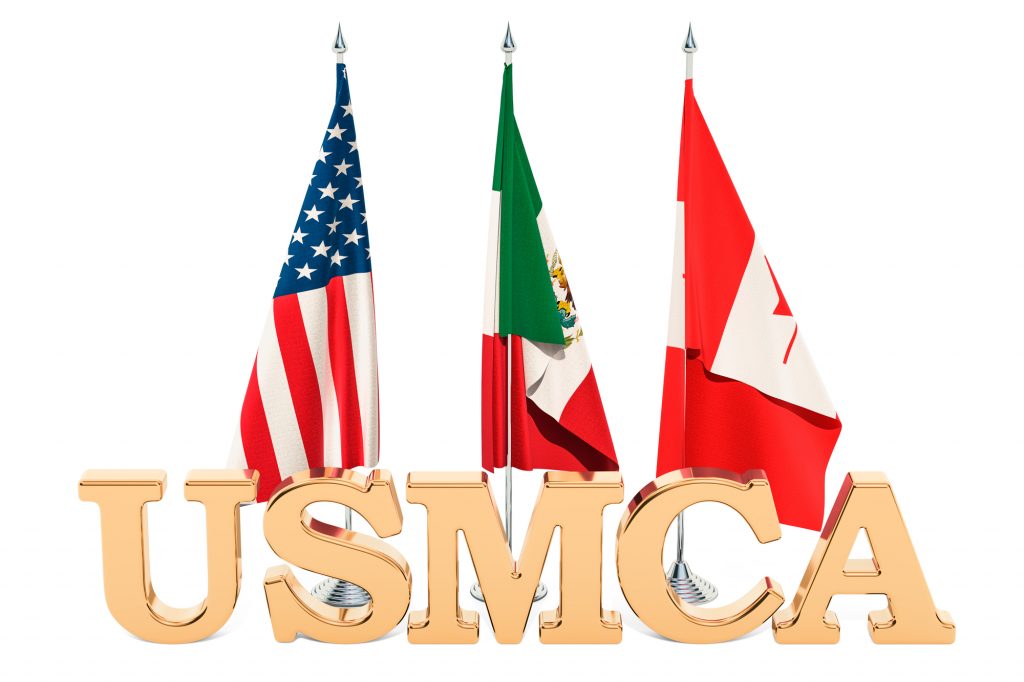 On January 16, 2020, the Senate passed the United States, Mexico, and Canada Agreement (USMCA), which the President signed into law on January 29, 2020. It replaces the North America Free Trade Agreement (NAFTA), which has been in effect since January 1, 1994.
On January 16, 2020, the Senate passed the United States, Mexico, and Canada Agreement (USMCA), which the President signed into law on January 29, 2020. It replaces the North America Free Trade Agreement (NAFTA), which has been in effect since January 1, 1994.
It is the first trade agreement ever to include a chapter dedicated to small- and mid-sized enterprises (SMEs).
Here are some highlights of that chapter and others relating to SMEs (adapted from the governments FAQs):
Trade opportunities
The USMCA establishes information-sharing tools that will help SMEs better understand the benefits of the agreement and provides other information useful for SMEs doing business in the region. The SME chapter also establishes a committee on SME issues comprised of government officials from each country.
The USMCA also includes a framework for an ongoing SME Dialogue, which will be open to participation by SMEs, to provide views and information to government officials on the implementation and further modernization of the agreement. The purpose: to ensure that SMEs continue to benefit.
Reduced red tape at the border
The Customs and Trade Facilitation chapter benefits SMEs because it:
- Creates a new informal shipment level of $2,500, so that express shipments under that amount benefit from reduced paperwork.
- Raises the de minimis level for Canada for express shipments for the first time in decades, with up to C$40 exempt from duties and taxes (increased from C$20) and up to C$150 exempt from duties. (As of December 11, 2019, each Canadian dollar was worth $1.32 in U.S. dollars.)
- Sets the de minimis level for Mexico up to US$50 exempt from duties and taxes, raising it up to US$117 duty-free for express shipments.
Support of technology
The Digital Trade chapter benefits SMEs because it:
- Prohibits customs duties on digital products distributed electronically (e-books, videos, music, software, games, etc.).
- Protects cross-border data flows and limits data localization requirements.
- Limits parties’ ability to require disclosure of proprietary source code and algorithms.
Support of agriculture
Like NAFTA, any food and agricultural products that have a tariff rate of zero under NAFTA will remain at zero under the USMCA. Canada will decrease certain current tariffs on dairy and poultry.
Government procurement
The Government Procurement chapter provides specific support for SMEs by:
- Focusing on policies to promote participation by small businesses in government procurement, including by providing incentives to make tender documentation free of charge and to consider how to better structure procurements to help U.S. small businesses compete.
- Maintaining, for both Mexico and the United States, exclusions consistent with those under the NAFTA, including, for the United States, the exclusion of the small business set aside.
Support of cross border services
The USMCA eliminates local presence requirements for cross-border service providers, benefitting small businesses by removing the unnecessary burden of opening a foreign office as a condition for doing business.
The Cross-Border Trade in Services chapter also has an SME provision encouraging parties to consider the effects of regulatory actions on SME service suppliers. USMCA seeks to ensure that authorization procedures for a service sector do not impose disproportionate burdens on SMEs.
Good regulatory practices
For the first time in a U.S. trade agreement, a chapter on good regulatory practices, which refers to good governance procedures that governments apply to promote transparency and accountability when developing and implementing regulations. Such practices can support the development of compatible regulatory approaches among the Parties, and reduce or eliminate unnecessarily burdensome, duplicative, or divergent regulatory requirements.
Final thought
The effective date, or dates, of these provisions is not yet known. USMCA is expected to add modestly to the US GDP and job growth. But it will take years to assess the true impact of this new trade agreement.


